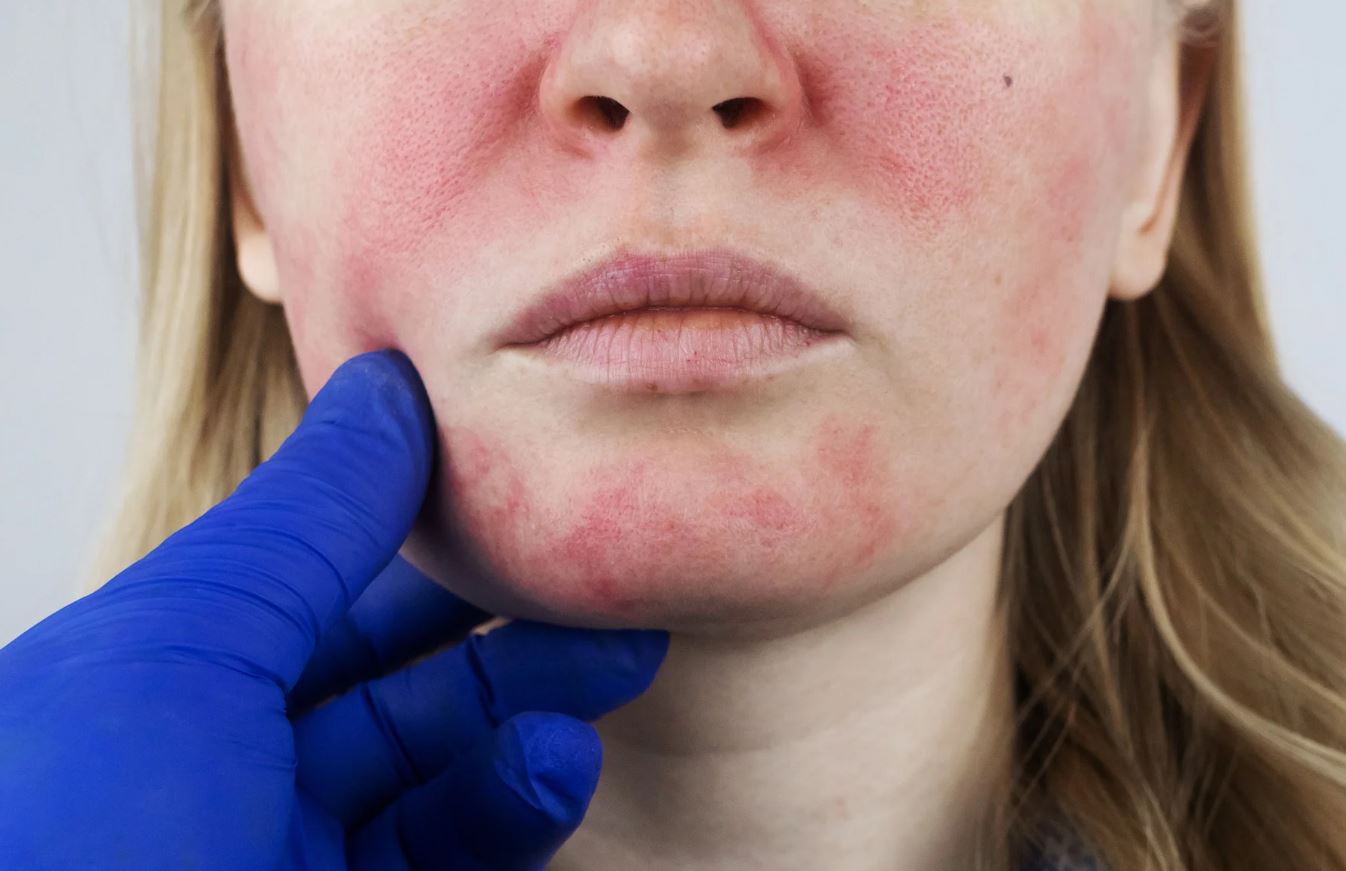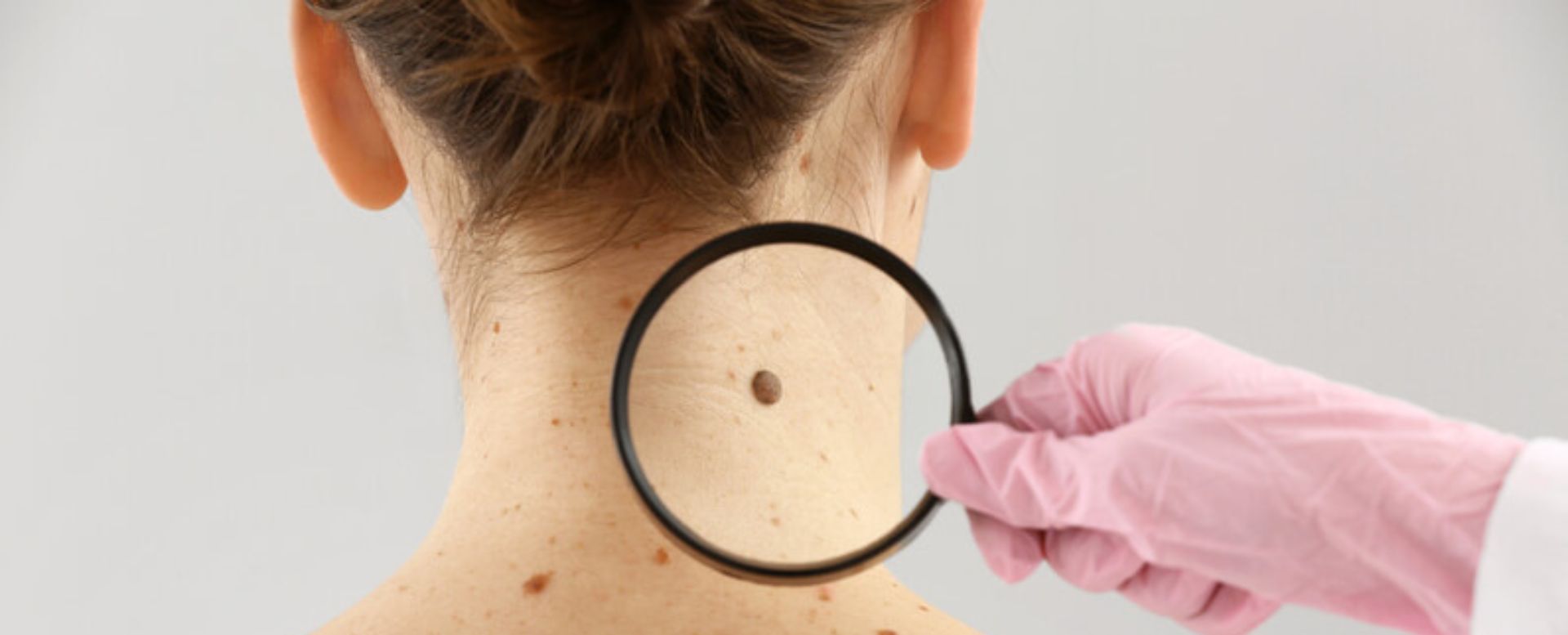Does the appearance of your mole worry you? If you’re concerned about a mole or its changes, book a mole screening at Skin Cancer Specialists in Houston, TX.
What is a mole check?
A mole check is a skin exam where a dermatologist looks at your moles to assess their size, shape, color, and texture.
The goal is to spot any changes to ensure your moles are healthy and haven’t developed any warning signs, such as irregular borders, multiple colors, or rapid growth.
What does a healthy mole look like?
A healthy mole is usually small, round or oval, and has smooth, even borders. Its color tends to be consistent, typically a single shade of brown or tan, and it stays relatively the same size over time.
Most healthy moles are symmetrical, meaning if you were to draw a line through the middle, both sides would match. They also don’t itch, bleed, or change in appearance.
How to know if my mole is okay?
Most moles are completely harmless, but it’s important to keep an eye on them to make sure they stay that way.
Your skin can give you clues when something’s not right, and knowing what to look for can help you catch any issues early.
You can use the ABCDE guide to identify suspicious moles:
A is for Asymmetry.
One half of the mole looks different from the other, which can be a warning sign.
B is for Borders.
Keep an eye out for edges that are irregular, notched, or scalloped, instead of smooth.
C is for Color.
Moles with multiple or uneven colors—like shades of brown, black, red, or even blue—should be checked.
D is for Diameter.
If a mole is larger than ¼ inch (about 6 millimeters), or grows quickly, it’s worth getting it evaluated.
E is for Evolving.
Any changes—whether in size, shape, color, or even if it starts itching or bleeding—deserve immediate attention.
What does a cancerous mole look like?
A cancerous mole is often one that changes in size, shape, or color, which is usually the first sign of melanoma. While around 30% of melanomas begin in existing moles, the rest start on normal skin.
Watch for irregular borders, uneven colors, or rapid growth, and if a mole starts itching, bleeding, or crusting, it’s time to get it checked by a skin cancer specialist or dermatologist.
When should I worry about my mole?
If you experience any of the following with a mole, contact a dermatologist immediately:
- Rapid changes in size, shape, or color
- Bleeding or oozing
- Persistent itching or tenderness
- New symptoms such as ulceration
Seeking medical attention for these changes right away is key in catching and treating potential skin cancer early.
How is mole removal done?
Mole removal is typically done when there’s concern about changes in the mole, such as growth, changes in color or shape, or if it’s causing discomfort.
Sometimes, people opt for removal for cosmetic reasons or if the mole is in a spot that gets irritated frequently.
It’s often performed as an outpatient procedure, meaning you can go home the same day. Here’s what to expect in a mole removal procedure:
Before
On the day of your mole removal, your dermatologist will examine the mole to choose the best removal method. There are two main options: shaving and excision.
You’ll be told which method is right for you and what to expect during the procedure. If you have any concerns or unusual symptoms before your appointment, reach out to our office for advice.
During
Mole removal is a simple procedure done under local anesthesia, so you won’t feel any pain. It’s usually quick and can be completed in 15-30 minutes, depending on the size and type of mole.
- For shaving, the mole will be carefully removed with a sharp razor.
- For excision, the mole will be cut out with a scalpel. If needed, stitches will be placed to close the wound.
Once the mole is removed, you’ll get instructions on how to care for the area as it heals.
After
Post-procedure, it’s normal to have some bruising, swelling, or redness where the mole was removed, but these should go away in a few days.
You might also see a small scar. We’ll give you clear aftercare instructions to help with healing, like how to care for the wound and when to come back for a follow-up.
Most people can get back to their usual activities soon after, but we recommend skipping any heavy exercise for about a week to ensure proper healing.
How much does mole removal cost in Houston, TX?
On average, the cost of mole removal in Houston, TX can range from $150 to $500 per mole, but this can vary depending on factors like the size and type of mole, the method used, and the clinic you visit.
Visit our locations in Sugar Land, Conroe, Katy, and Houston, Texas to get an accurate estimate.
Is mole removal covered by insurance?
Mole removal may be covered by insurance if it’s deemed medically necessary, such as when the mole shows signs of potential cancer or causes discomfort.
However, if the procedure is done purely for cosmetic reasons, insurance typically won’t cover it. It’s best to check with your insurance provider to understand what’s included in your plan before scheduling the removal.
Get Expert Mole Diagnosis & Treatment in Houston, TX.
If you’re concerned about a mole, our mole specialists are here to help. Our board-certified dermatologists provide expert mole diagnosis and removal to ensure your skin stays healthy.
Whether it’s for medical reasons or cosmetic concerns, we provide full body skin checks and advanced removal methods that are safe for all skin types.
Call us at 832-364-6184 to schedule your appointment today and get personalized care from Houston’s leading skin experts. We serve patients in and around Sugar Land, Conroe, Katy, and Houston, Texas.




